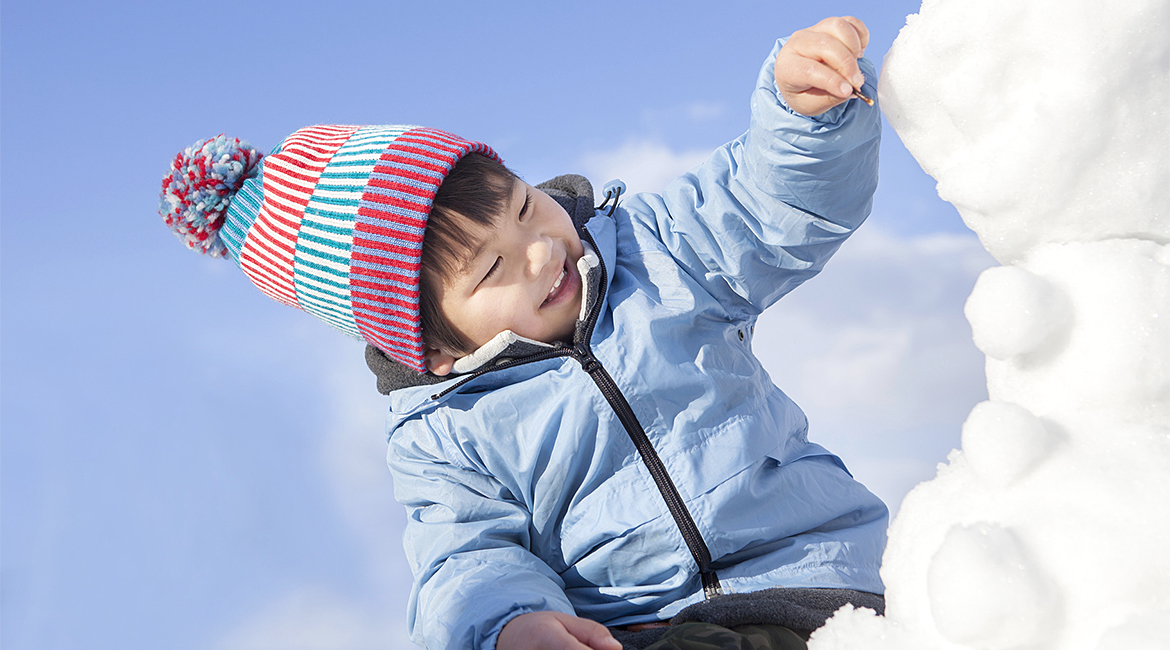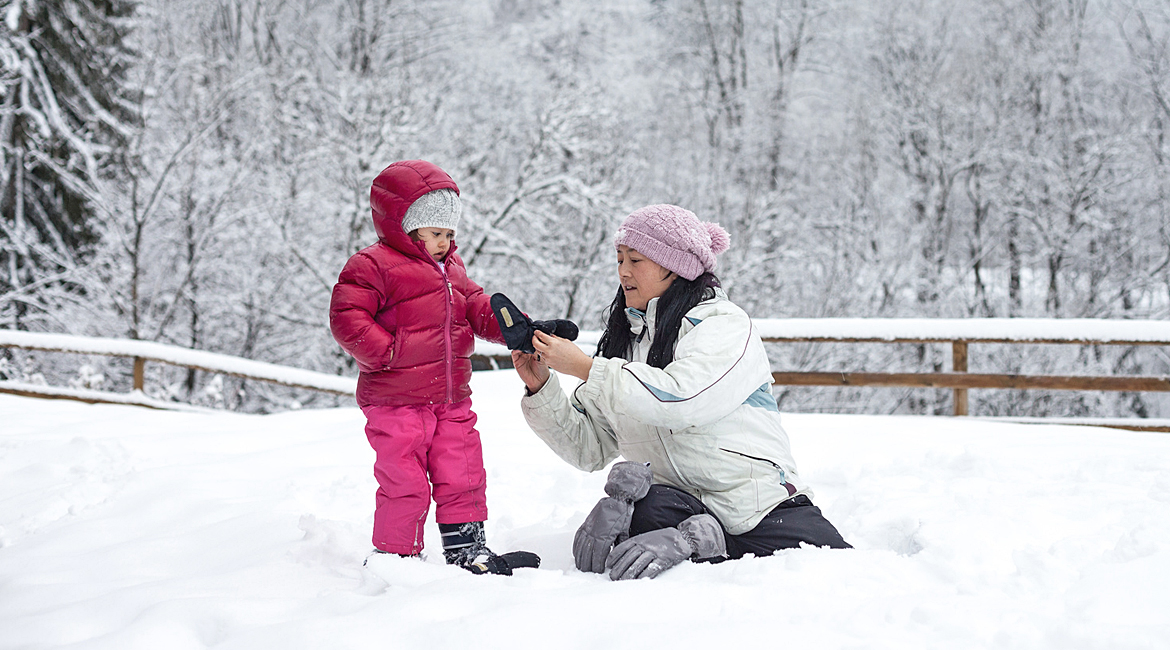Winter has arrived, and there’s no greater feeling for your little ones than the opportunity to stay home from school and experience a “Snow Day”! Whether you live in a place that gets a foot of snow each week during the season or just one big snowfall each year, the cold weather rules are important for everyone to know. With a little knowledge and a little precaution, you’ll be able to let your little ones conquer the magical world of fallen snow. Follow this guide to bundling up, venturing out and enjoying the winter months the safest way possible.
Baby, It’s Cold Outside
The temperature outside can be a determining factor in safe outside play during the cold months. It’s more important to pay attention to the temperature taking into account the wind-chill which can cause the temperature to feel much lower than the number actually reports. A good rule of thumb is that when the wind-chill in 32 degrees F or higher, it’s safe to be outside. For temperatures between 13 degrees F and 31 degrees F, your children should take a break every 20-30 minutes. If the wind-chill is 13 degrees F or below, you shouldn’t let your children play outside because of the risk of frostbite, the freezing of the extremities due to extreme cold. Know the signs of hypothermia, when the body’s temperature gets very low, and stave it off by taking breaks or coming in at the first sign of symptoms. The signs of hypothermia are shivering, sleepiness, clumsiness and slurred speech. You’ll also want to make sure your kids are extra hydrated as it’s harder for them to tell when they’re thirsty during cold weather. When they do come in from playing, prepare some hot chocolate and have a warm blanket ready so they can cuddle up. They’ll be freezing, and you’ll be glad you’re prepared to warm them up quickly.
Bundle Up
Kids don’t have a feel for what to wear in cold weather. According to the American Academy of Pediatrics, you should dress your children in one more layer than you would wear as an adult. This means you should give them several layers that are breathable but keep them warm. Always end with clothing that is water-resistant, like a snowsuit. And always cover delicate areas with gloves, scarf and minutes. Make sure to wear water-resistant snow boots to keep the cold and wet out. Check for hanging strings or zippers and secure so that they don’t get caught on limbs while your child is sledding or playing. When riding in the car, take off bulky sweaters or coats that could cause the seat belt to lose some of its effectiveness. If your child has asthma, make sure to clear winter play with your pediatrician as cold weather can aggravate their breathing and may require special precautions like wearing a scarf over the mouth or carrying a special inhaler. The sunlight is reflected from the snow so it’s more important than ever to make sure to cover those little cheeks in sunscreen. Wearing bright colored clothing can also help snow trucks and traveling vehicles to be extra cautious around your little one. You’ll also want to apply an ointment and chapstick so that your little one doesn’t get any windburn or chapped lips from the harsh winter wind.
Getting Outdoors
Once your child is protected from the weather, it’s time for him to hit the snow for winter play. When sledding, make sure your child finds a clear open path that’s void of trees, brush or posts. Have him wear a helmet for protection and always sled on his bottom, never head first. When ice skating, make sure to check any ice before a child ventures out to skate. Call your local police/fire station for a list of acceptable skating areas. Make sure your child always has a buddy or a parent with them when they head out to play. Make sure they also know to take a break every half hour to warm up and rehydrate. When skating, snowboarding, sledding or playing hockey, make sure all equipment is up to date and stable enough for your child to use appropriately. For all outdoor sports activities, make sure your child has proper instruction and all the necessary safety equipment, like goggles or knee pads, before venturing out. Never let your little one play on a road where cars may drive or in a snow bank where vehicles, especially snow plows, may miss seeing them when driving by. Also, make sure that children know it is dangerous to dig tunnels in the snow as they may cave in and trap them. Should your child become trapped or injured while playing, immediately call 911.
The most important thing to remember is that snow days are the most fun for your child and by following certain safety rules, they’ll be able to have a ton of fun without any worry of potential dangers. Make sure the temperature is okay for outdoor play, dress your child appropriately for the winter weather, check sports equipment, make a buddy plan, teach your child the right rules to follow while playing in the snow, and remember to have a little fun! When the safety rules have been covered, you’ll be free to let your children make wonderful winter memories.





